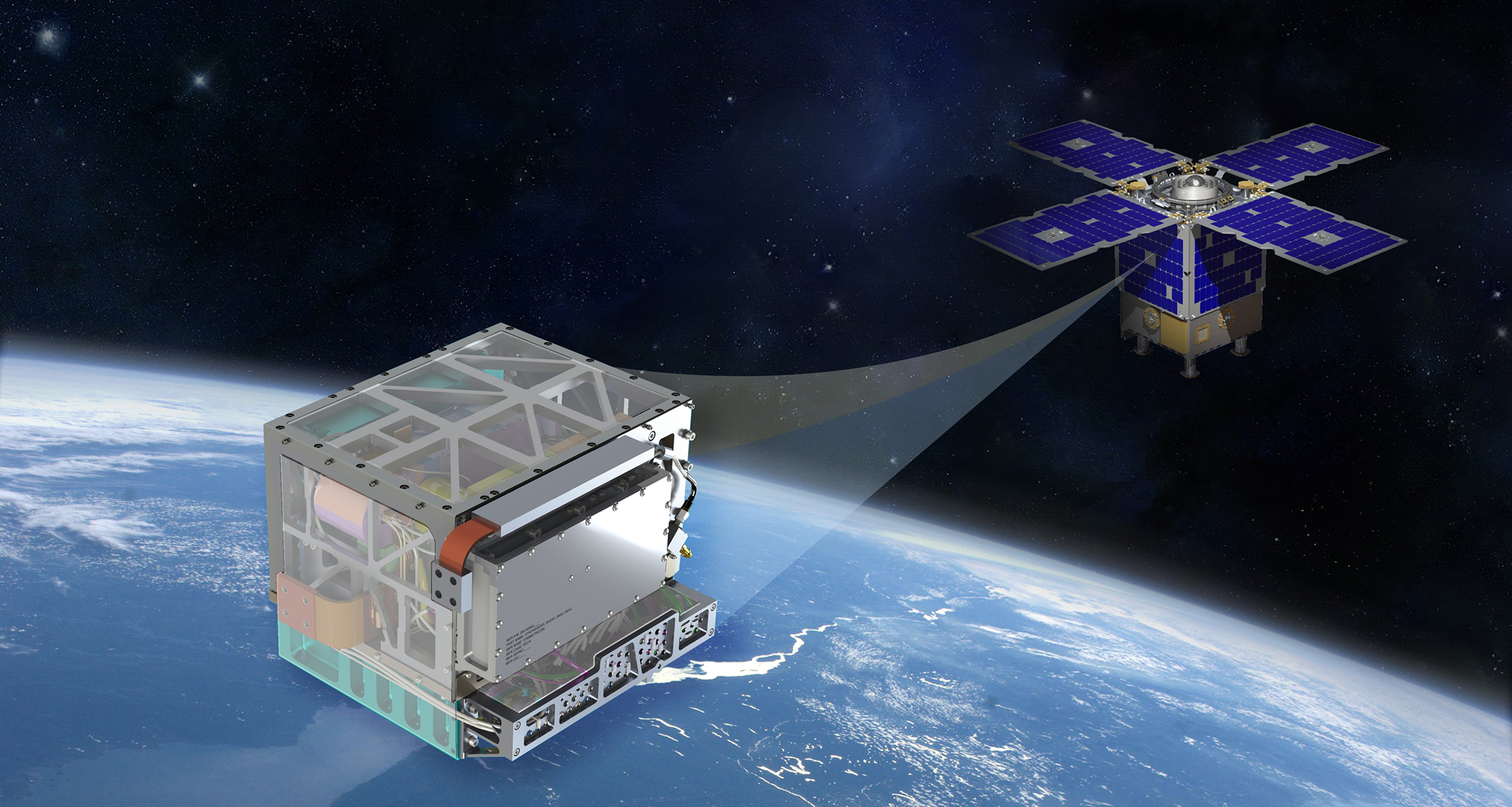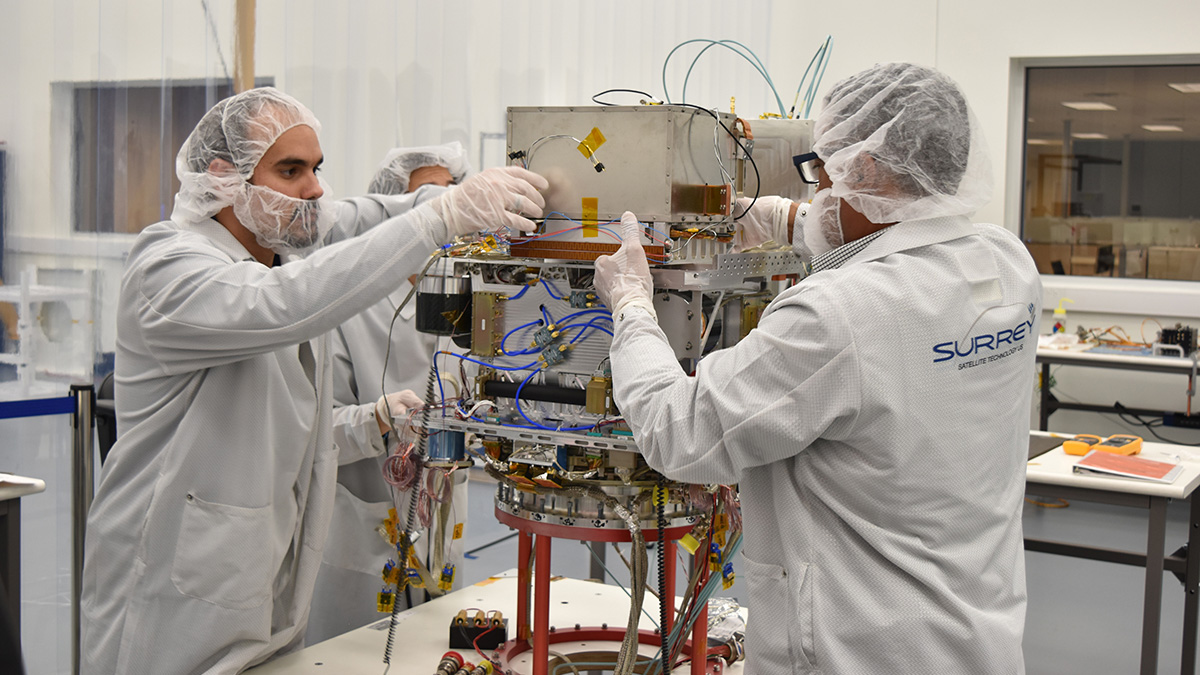NASA Just Activated Its Deep Space Atomic Clock

An atomic clock capable of paving the way for deep space exploration has been successfully activated, the clock's mission team confirmed on Aug. 23.
Launched in June, 2019, NASA's Deep Space Atomic Clock (DSAC) is now in orbit around Earth and ready to begin a year-long tech demo. The mercury-ion atomic clock, developed at NASA's Jet Propulsion Laboratory, could one day support autonomous spacecraft traveling far out into the cosmos.
Atomic clocks measure the distance between objects by timing how long it takes for a signal to travel from one object to the other. While a pendulum clock, for example, keeps time by counting the "ticks" of its resonator: a pendulum and gears, an atomic clock keeps time with a different resonator: the resonance frequencies of atoms.
Related: A NASA Atomic Clock Will Pioneer Deep-Space Travel
GPS satellites use atomic clocks to allow people on Earth to navigate, and NASA hopes that this atomic clock will guide crewless spacecraft to deep space destinations. The DSAC is designed to be the first clock stable enough to map the trajectory of a spacecraft traveling into deep space. The clock can also stow away on the craft, being much smaller than the refrigerator-sized atomic clocks that navigators on Earth now use to track spacecraft.
Currently, spacecraft navigating with atomic clocks receive and then send signals to Earth, which are used to pinpoint their location. After this signal bounces to and from the craft, navigators will create and send navigation instructions back to the craft. This back and forth can take a few minutes or even hours.
A spacecraft with its own atomic clock on board could calculate its own trajectory and navigate itself through the solar system. It wouldn't have to wait for navigators to send and receive a signal and devise instructions. In addition to cutting down on time, the DSAC could also allow a spacecraft to travel greater distances from Earth because it would not be relying on an Earth-bound team for navigation. The clock is also 50 times more accurate than even the best existing navigation clocks.
Breaking space news, the latest updates on rocket launches, skywatching events and more!
Now that this atomic clock is activated, the team at JPL will measure how it keeps time down to the nanosecond. While slight inaccuracies might not be that big of a deal for timekeeping here on Earth, even the slightest deviation or error could alter a trajectory drastically. A spacecraft on its way to Mercury, for example, could end up wildly off-track, smacking into the sun.
"The goal of the space experiment is to put the Deep Space Atomic Clock in the context of an operating spacecraft — complete with the things that affect the stability and accuracy of a clock — and see if it performs at the level we think it will: with orders of magnitude more stability than existing space clocks," navigator Todd Ely, principal investigator of the project at JPL, said in a statement.
While this technology is being tested for crewless spacecraft, it is intended to one day support crewed missions to deep space. The team behind the atomic clock hopes that eventually, astronauts will be able to use this tech to navigate themselves through the cosmos to never-before-visited, far-off destinations.
- SpaceX's Falcon Heavy: Latest News, Images and Video
- Ultraprecise Atomic Clock Network on the Hunt for Dark Matter
- SpaceX's Amazing Falcon Heavy Triple Rocket Landing
Follow Chelsea Gohd on Twitter @chelsea_gohd. Follow us on Twitter @Spacedotcom and on Facebook.

Chelsea “Foxanne” Gohd joined Space.com in 2018 and is now a Senior Writer, writing about everything from climate change to planetary science and human spaceflight in both articles and on-camera in videos. With a degree in Public Health and biological sciences, Chelsea has written and worked for institutions including the American Museum of Natural History, Scientific American, Discover Magazine Blog, Astronomy Magazine and Live Science. When not writing, editing or filming something space-y, Chelsea "Foxanne" Gohd is writing music and performing as Foxanne, even launching a song to space in 2021 with Inspiration4. You can follow her on Twitter @chelsea_gohd and @foxannemusic.


